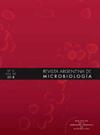非器质性厌食症患儿肠道菌群多样性分析。
IF 2.1
4区 生物学
Q4 MICROBIOLOGY
引用次数: 0
摘要
儿童非器质性厌食症的发病机制尚不清楚。本研究拟对肠道菌群进行分析,为临床合理选择微生态制剂提供相关理论依据。本研究以非器质性厌食症患儿为厌食症组,正常健康患儿为对照组。收集粪便标本,经PCR和高通量测序进行生物信息学分析。结果显示,厌食症组的Ace、Chao、Shannon指数均高于对照组,对照组的Simpson指数低于厌食症组。在门水平上厌食症组有14个类群,健康对照组有11个类群;在属水平上厌食症组有193个类群,健康对照组有180个类群。两组在门水平的优势菌群相同,而厌食症组在属水平上有16个优势菌群,对照组有17个优势菌群。厌食症组拟杆菌门(Bacteroidetes)与厚壁菌门(Firmicutes)的百分比丰度比(B/F指数)高于对照组。厌食症组拟杆菌门(Bacteroidetes)丰度高于对照组,放线菌门(actinomytes)丰度高于厌食症组。在属分类水平上,两组间有14个优势属存在显著差异。LEfSe多水平物种差异分析显示,在门水平上,厌食症组影响显著的细菌类群是对照组的拟杆菌门(Bacteroidetes)和放线菌门(Actinobacteria)。在属水平上,厌食症组影响显著的细菌类群为拟杆菌(Bacteroides)、粪杆菌(Faecalibacterium)和亚doligranulum,对照组影响显著的细菌类群为双歧杆菌(Bifidobacterium)、蓝杆菌(Blautia)、链球菌(Streptococcus)、Lachnoclostridium和丹毒杆菌(Erysipelatoclostridium)。我们认为,拟杆菌丰度或B/F指数的增加和双歧杆菌丰度的减少与厌食症的发病机制有关。本文章由计算机程序翻译,如有差异,请以英文原文为准。
Analysis of intestinal microbiota diversity in children with non-organic anorexia
The pathogenesis of non-organic anorexia in children is not clear. This study intends to analyze intestinal bacteria to provide a relevant theoretical basis for the clinical rational selection of microecological agents. In the present study, children with non-organic anorexia were included in the anorexia group and normal healthy children in the control group. Stool samples were collected for the bioinformatics analysis after PCR and high-throughput sequencing. The results showed that the Ace, Chao, and Shannon indexes in the anorexia group were higher than those in the control group, while the Simpson index in the control group was lower than in the anorexia group. There were 14 taxa in the anorexia group and 11 taxa in the healthy control group at the phylum level, and 193 taxa in the anorexia group and 180 in the control group at the genus level. The dominant bacteria at the phylum level of the two groups were the same, while there were 16 dominant bacteria taxa in the anorexia group and 17 in the control group at the genus level. The ratio of percentage abundance of Bacteroidetes to that of Firmicutes (the B/F index) in the anorexia group was higher than in the control group. The abundance of Bacteroidetes in the anorexia group was higher than that in the control group, and the abundance of Actinomycetes in the control group was higher than that in the anorexia group. There were significant differences in 14 dominant genera between the two groups at the genus classification level. The LEfSe multilevel species difference analysis showed that at the phylum level, the significant influential bacterial taxa in the anorexia group were Bacteroidetes and Actinobacteria in the control group. At the genus level, the significant influential bacterial taxa in the anorexia group were Bacteroides, Faecalibacterium, and Subdoligranulum, and Bifidobacterium, Blautia, Streptococcus, Lachnoclostridium, and Erysipelatoclostridium in the control group. We conclude that the increase in Bacteroides abundance or in the B/F index and the reduction in Bifidobacterium abundance were related to the pathogenesis of anorexia.
求助全文
通过发布文献求助,成功后即可免费获取论文全文。
去求助
来源期刊

Revista Argentina de microbiologia
MICROBIOLOGY-
CiteScore
3.30
自引率
0.00%
发文量
46
审稿时长
>12 weeks
期刊介绍:
La Revista Argentina de Microbiología es una publicación trimestral editada por la Asociación Argentina de Microbiología y destinada a la difusión de trabajos científicos en las distintas áreas de la Microbiología. La Asociación Argentina de Microbiología se reserva los derechos de propiedad y reproducción del material aceptado y publicado.
 求助内容:
求助内容: 应助结果提醒方式:
应助结果提醒方式:


